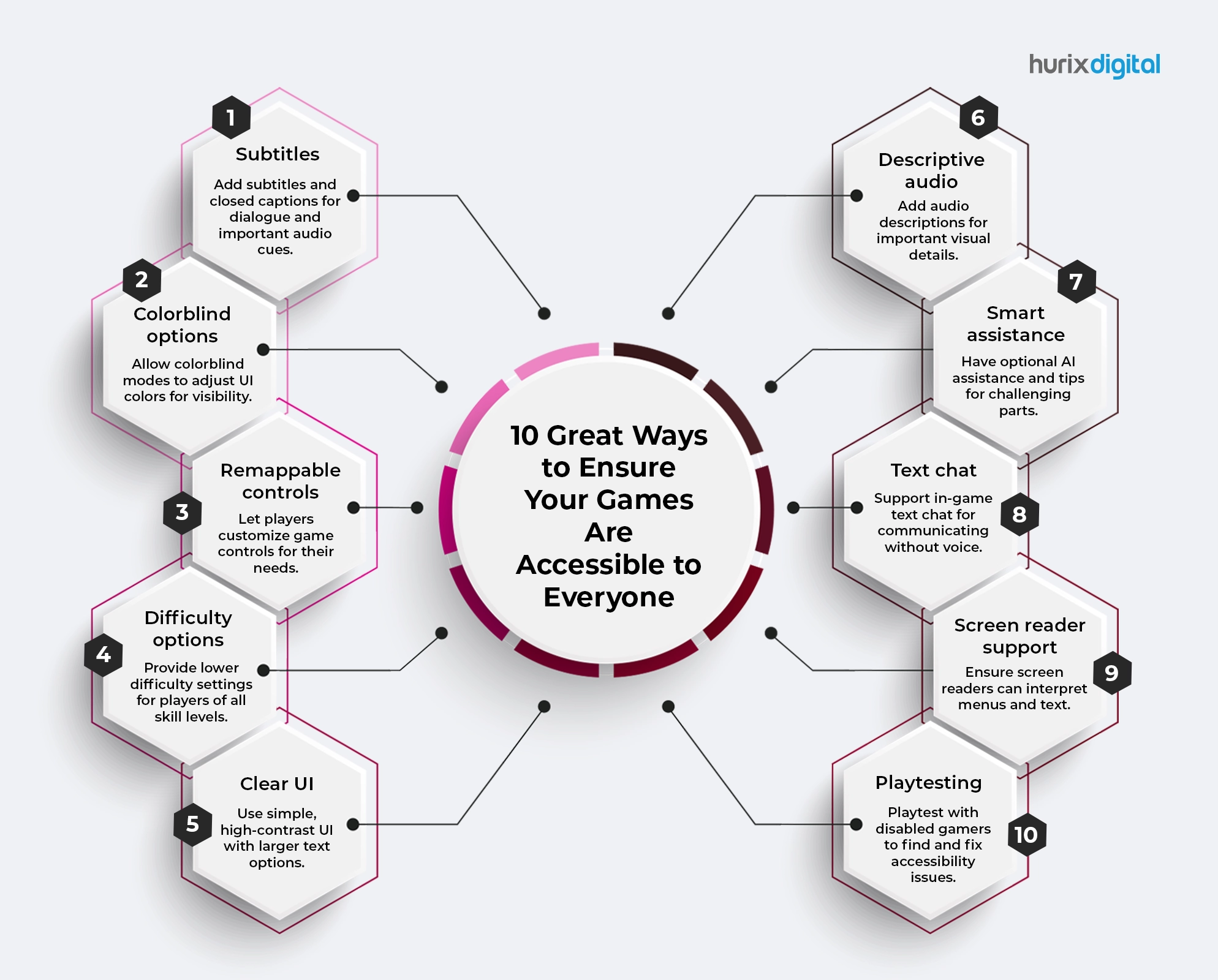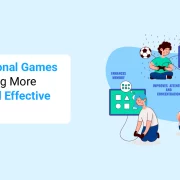Video games should be enjoyable for all players, regardless of ability. Game accessibility ensures that people with different needs can experience and interact with games without barriers. Developers who prioritize accessibility create more inclusive and engaging experiences.
From customizable controls to visual and audio enhancements, small design choices can make a big difference for gamers who face challenges with traditional interfaces.
Want to make your games inclusive? Hurix Digital can help. Contact Us Now to learn more.

Why Game Accessibility Matters
Millions of players worldwide have disabilities that affect their ability to play games. Accessibility features improve usability and allow more people to engage with interactive entertainment. Key benefits include:
- Increased player reach – Games become playable for a wider audience.
- Improved user experience – Accessibility features help all players, not just those with disabilities.
- Positive industry reputation – Developers who focus on inclusion build loyal player communities.
Ways to Improve Game Accessibility
1. Subtitles and Closed Captions
Adding subtitles for dialogue and sound cues benefits players who are deaf or hard of hearing. Adjustable text size and color contrast improve readability.
2. Colorblind Support
Many players struggle with color-coded elements. Developers should include modes that adjust UI colors to improve visibility for colorblind users.
3. Customizable Controls
Remappable buttons and alternative input methods allow players to adjust controls based on their comfort and physical abilities.
4. Adjustable Difficulty Levels
Offering different difficulty settings ensures that players of all skill levels can enjoy the game without frustration.
5. Clear and Simple UI
High-contrast visuals and scalable text make menus and in-game content easier to read, especially for those with visual impairments.
6. Audio Descriptions
Adding narrated descriptions for on-screen actions and visual cues helps visually impaired players follow the game.
7. AI Assistance and Hints
Built-in assistance tools, such as guided navigation and smart hints, support players in completing complex challenges.
8. Text-Based Communication
Including in-game text chat provides an alternative to voice communication for players with speech or hearing disabilities.
9. Screen Reader Compatibility
Ensuring that screen readers can interpret game menus and text helps blind and visually impaired gamers navigate interfaces.
10. Playtesting with Disabled Gamers
Involving players with disabilities in testing phases helps identify barriers and improve accessibility before release.
Final Thoughts
Prioritizing game accessibility ensures that more players can enjoy and engage with video games. By implementing thoughtful design choices, developers create inclusive experiences that make gaming more enjoyable for everyone.



